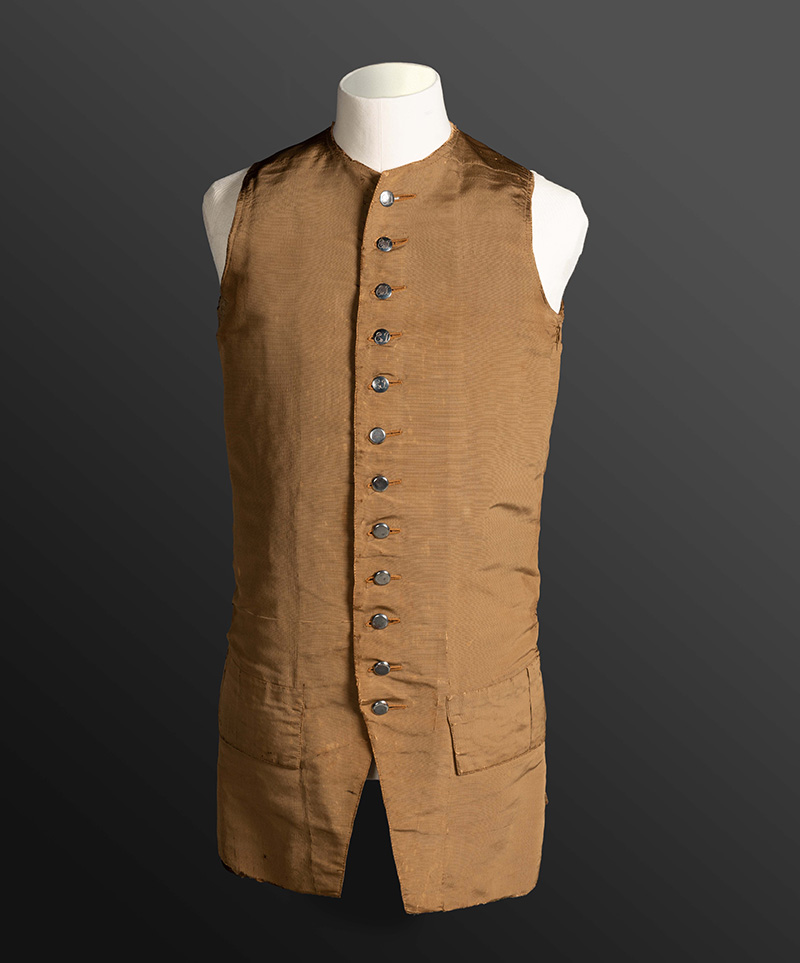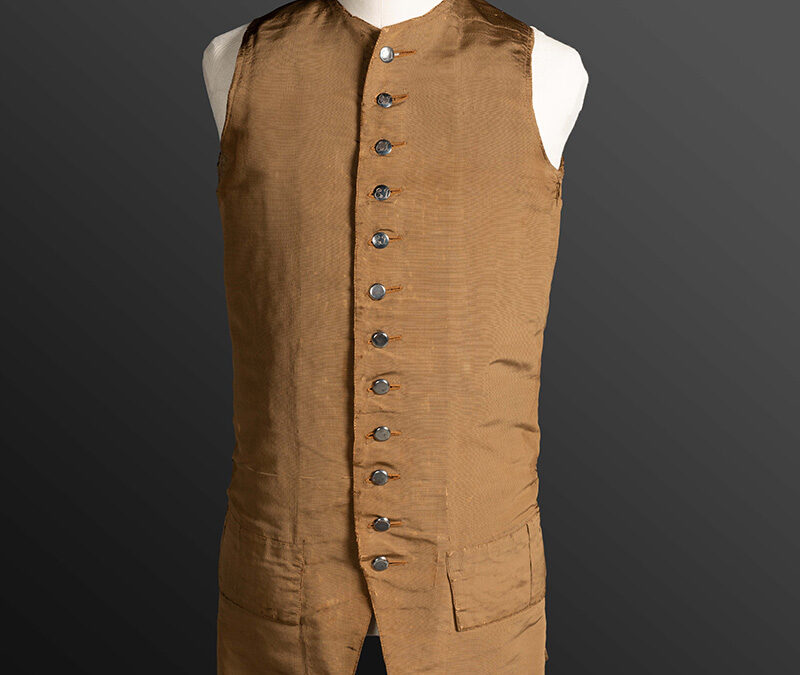
| Maker | Unknown |
| Date of Creation | 1760–80 |
| Location | Chester County, Pennsylvania |
| Materials | Silk (front and back), Worsted Wool (lining), Linen (pockets and center back lining), Silver (buttons) |
| Institution | The Colonial Williamsburg Foundation |
| Credit Line | Gift of Pamela W. Ellsworth |
| Accession Number | 2019-105 |
| Photo Credit | Colonial Williamsburg Foundation |
Emmor Jefferis was born in 1732 in East Bradford township, Chester County, PA, to James and Elizabeth Tull Jefferis. He grew up as a Quaker attending the Concord and Birmingham Meetings. The Jefferis family owned property, including a ford along the east branch of the Brandywine River where they farmed and operated a gristmill. On September 11, 1777, the peaceful Brandywine Valley became the site of the largest battle in the American Revolution and Emmor Jefferis would be caught in the middle, perhaps making his waistcoat a witness to the event.
The Battle of the Brandywine commenced early on September 11, 1777. Sir William Howe, commander of the British forces, divided his army into two columns, a smaller force under the command of General Wilhelm von Knyphausen that was to harass the American center by Chadd’s Ford, while General Charles Cornwallis took the main body of troops and flanked the American position, marching through the Jefferis property, ransacking his house, and taking him prisoner. In 1846, Joseph Townsend recollected “a sudden by the appearance of the [British] army coming out of the woods into the fields belonging to Emmor Jefferis, on the west side of the creek above the fording place.”
While collecting stories of Chester County’s history in 1845, William Darlington wrote “a number of [Wilmington] merchants and others sent their goods to Chester County, near the forks of the Brandywine – exactly in the way of the depredations which they hoped to escape. A large quantity of liquors was stored in the cellar of Emmor Jefferis at Jefferis’s Ford – the very route by which Sir William Howe and Lord Cornwallis passed with the main division of the enemy. The British soldiers ransacked the house, rolled the casks of liquor out of the cellar, knocked in the heads of the vessels and drank of the contents until a great number of them become intoxicated. Sir William Howe took Mr. Jefferis with him as a guide, to conduct him towards the Birmingham Meeting House.”

